

USING JOURNAL WRITING TO EXPLORE "THEY COMMUNICATE TO LEARN MATHEMATICS AND THEY LEARN TO COMMUNICATE MATHEMATICALLY"
Louis Lim
Faculty of Education, York University
Dr. David K. Pugalee
University of North Carolina at Charlotte
Abstract
Recent results from the Education Quality and Accountability Office (EQAO)'s grade 9 applied mathematics assessment found that students are experiencing difficulty with the Ontario curriculum, specifically with written communication. Action research was conducted during the second semester of 2003/04 in a grade 10 applied mathematics class to determine the effects of journal writing on students' learning of mathematics. Entries reveal that students' written expression improved and they were able to consolidate their learning through reflective writing. Further, this study supports Black and Wiliam's (1998) claim that formative feedback can improve student achievement. The paper concludes with the impact of action research on both researchers.
Introduction
Language and mathematics are intrinsically related. Attention to language is an important component in developing students' conceptual understanding of mathematics. This level of significance is recognized in the National Council of Teachers of Mathematics' P rinciples and Standards for School Mathematics (2000), with communication identified as one of five process standards along with reasoning and proof, connections, problem solving, and representation. This document has had a tremendous impact on curriculum writing and textbook publishing in Canada and the United States . In Ontario , mathematics teachers are mandated to assess students' ability to communicate their reasoning, and their use of mathematical language and symbols.
Lindquist & Elliot (1996) believe that thinking of mathematics as a language can affect how the subject is taught and learned: "How do we learn a language? We talk, we listen, we read, we write. We build the concepts underlying the ideas so we can communicate with meaning" (p. 5-6). Vygotsky (1986) posited that students develop higher-order thinking through language.
Communication shifts the focus from "assessment of learning" to "assessment for learning" (Davies, 2000). Traditionally, assessment was used to rank, sort, and group students, marginalizing minority students and those from low socioeconomic areas (Boaler & Wiliam, 2001; Ollerton, 2001; Zevenbergen, 2003). Davies believes that formative assessment can provide students with descriptive feedback on what they are doing well and what needs to be improved, allowing the teacher to address students' misconceptions before summative assessments. That is consistent with Black and Wiliam (1998), whose analysis of 250 studies concluded that formative assessment can benefit all students, with the greatest impact on low achieving students.
Writing-to-Learn
Writing-to-learn mathematics provides a powerful learning mechanism that demands descriptive assessment processes that promote reflective learning. Writing is a generative action that supports students as they analyze, compare facts, and synthesize information (Farrell, 1978). Boscolo and Mason (2001) maintain that "writing can improve students' learning by promoting active knowledge construction, requiring them to be involved in transforming rather than a process of reproducing" (p. 85). Writing in mathematics engages students as they manipulate, integrate, and restructure knowledge through using and reflecting on prior knowledge, concepts, and beliefs. Such cognitive engagement facilitates the development of meaningful understanding. This increased reflection and thinking about mathematics improves the understanding and retention of those ideas and concepts.
Writing is one form of communication. Pugalee (2005) and Nelson (2001) use writing-to-learn mathematics extensively. Nelson states that writing allows students to make connections, reflect on and synthesize learning, while also engaging in authentic practices of the discipline. Pugalee adds that students actively take control of what is studied since they own the writing and the mathematics.
Significance of Study
The Education Quality and Accountability Office (EQAO)'s large-scale assessment results found that grade 9 applied mathematics students are experiencing difficulty with the curriculum. In 2003-04, only 25% of students attained at least a level 3 (equivalent to 70%) (EQAO, 2003). Although the EQAO results are used only for system accountability, the media separately reported the high failure rates of students enrolled in the grade 9 applied mathematics course. Such a finding is of interest since 3 mathematics credits (1 at the senior level) are required to graduate from high school in Ontario . Also, students' achievement in written communication is of concern. Of the four categories on the achievement chart (knowledge, applications, thinking/inquiry/problem solving, communication), students performed the poorest on communication, with only 13% achieving at least a level 3 in 2003-04. Their performance on the EQAO assessment and the high failure rates in the grade 9 applied mathematics course expedited the Ontario Ministry of Education to revise the grades 1-12 mathematics curriculum during the summer of 2004. The grades 1-10 mathematics curricula are slated for implementation in September 2005. It should be emphasized that the curriculum was revised, not overhauled or rewritten.
Purpose
This study, conducted from February 2004 to June 2004, explored the dual connection between learning mathematics and communication through journal writing: "They (students) communicate to learn mathematics, and they learn to communicate mathematically" (NCTM, 2000, p. 60). In particular, we wanted to determine the role of writing in helping students learn mathematics and if the quality of students' writing improved through the semester. Although this study was conducted in a grade 10 applied mathematics class, we believe that journals can be used in any course at all grade levels. Hence, the specific questions were:
- What effect does expository journal writing have on students' learning of mathematics?
- What are students' views of journals?
Action Research
To answer the questions posed, a qualitative research methodology incorporating action research was used. Bogdan & Biklen (2003) describe qualitative research as "rich in description of people, places, and conversations not easily handled by statistical procedures" (p. 2). Stevens (2005) defines action research as "systematic study of my own practice designed to improve my practice." McNiff, Loxam, & Whitehead (1996) state that it is the action that drives the research; that is, using "insider research" to answer, "How can I improve." (p. 6). Glanfield, Poirier, & Zack (2003) state that action research focuses on teacher inquiry. Action research was conducted in the first author's classroom using Kemmis & McTaggart's (1988) iterative model: plan, act, observe, and reflect. The second author served as a university mentor through ongoing collaboration. Hannay (1998) describes action research as taking voluntary action through a "journey of discovery," resulting in professional and personal growth.
The Study
Each student was provided with a 32-page hole-punched notebook. On the first day of class, students were informed that they would write journals for approximately 10 minutes at the end of class several times a week. They were asked to do their best with spelling and grammar since clear and concise writing are important features of effective communication. Journals were collected at the end of the class period. To help alleviate the pressure of "being marked", students were informed that only descriptive feedback (no marks) would be provided. To ensure that journal writing was perceived as important (rather than add-on), marks were awarded at mid-term and near the end of the course. Students selected two entries at each reporting period that reflects their best work. In addition, similar questions appeared on unit tests, so journal writing was threaded throughout both the instructional and assessment practices for the class. The written products were scored using a rubric created by the authors:
Figure 1: Journal Rubric
Criteria |
Level 1 |
Level 2 |
Level 3 |
Level 4 |
Uses clear explanations |
Attempts to provide explanations, but lacks clarity, details, and precision. Explanations are inappropriate or flawed. |
Provides explanations that demonstrate some clarity, detail, and precision. Response needs major revisions so that it can be followed by the reader. |
Provides explanations that demonstrate considerable clarity, detail, and precision. Response needs minor revisions so that it can be followed by the reader. |
Provides explanations that are clear, detailed, and precise. The response is easily followed by the reader. |
Use of mathematical language, vocabulary, and symbols |
Uses correct mathematical language, vocabulary, and symbols infrequently in response. To describe actions, non-mathematical language is used consistently. |
Uses mathematical language, vocabulary, and symbols correctly with several errors, in response. To describe actions, some mathematical language is used as well as some non-mathematical language. |
Uses mathematical language, vocabulary, and symbols correctly, with up to 1 error, in response. To describe actions, mathematical terms are consistently used. |
Uses mathematical language, vocabulary, and symbols correctly throughout the response. To describe actions, mathematical terms are always used, rather than non-mathematical language. |
Selects algorithms and demonstrates computational proficiency using algorithms |
Selects inappropriate algorithms or computations contain several major mathematical errors. |
Selects inappropriate algorithms and computations contain several minor mathematical errors or one major mathematical error. |
Selects appropriate algorithms and computations contain one minor mathematical error. |
Selects appropriate algorithms and computations contain no mathematical errors. |
The majority of questions were of the form, "Describe, step-by-step, ." The entries allowed students to write descriptions and to reflect and consolidate their learning. As one student stated, "Explaining how you solved the problem in words lets you know if you know how to do it or not." Questions were taken from the course textbook, Mathematics: Applying the Concepts 10 (2000), or modified. It should be noted that although attention has been placed on how to learn and teach mathematics (e.g., discovery activities that use graphing calculators or manipulatives), the Ontario curriculum can be interpreted as a listing of content expectations to be covered (e.g., The Ontario Curriculum Grades 9 and 10: Mathematics, 1999). Hence, content and skill acquisition remains a primary aim of instruction.
Figure 2: Journal Questions
- Salt is made up of sodium and chlorine in the ratio of 23:26. If there is 45 g of chlorine, how many grams of sodium are needed?
- Your classmate missed yesterday's class and calls you at 2:00 a.m. Explain to the student how much you would earn working 34.5 hours if you earn $38.76 working 3 hours.
- Find the actual length of a horsefly that measures 10 cm on paper, with a scale 4:1.
- The Big Show Ô is 2.26 m tall. Your teacher is 1.65 m. On a sheet of paper, you draw your teacher with a height of 7.2 cm. How tall is the WWE Ô star?
- Describe, step-by-step, how to solve 4( x + 5) - 3 = 2 x + 3.
- Describe, step-by-step, how to solve
 .
. - Describe the steps in detail to rearrange
 into standard form
into standard form  .
. - Solve the system of equations
 graphically. Describe your steps.
graphically. Describe your steps. - Solve the system of equations
 using the method of elimination. Describe your steps.
using the method of elimination. Describe your steps. - Describe, step-by-step, how high is the support x for the conveyor? The diagram is not drawn to scale.
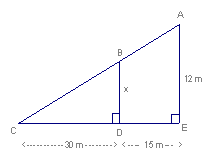
- Find tan I and then <I. Describe your steps.
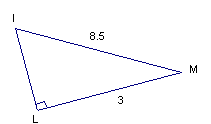
- Graph y = ( x - 2) 2 - 1 using transformations. Then, describe step-by-step how you graphed y = ( x - 2) 2 - 1. Be detailed, clear, and concise.
- Describe how to expand and simplify (3 x - 1)(2 x - 5).
- Describe how to factor 18 x 3 + 9 x 2 + 27 x .
- Sketch y = x 2 + 3 x - 4 by finding the roots of x 2 + 3 x - 4 = 0, direction of the opening (up or down), and y -intercept. Then, explain step-by-step how to sketch y = x 2 + 3 x - 4.
Analysis of Findings
In the table below, journals 1 and 2 reflect entries that students selected from the first half of the course, while journal entries A and B are those selected for the second half. All students were able to achieve at least a level 3 on the second half of the chosen entries, corresponding to a 70%+ level (the standard that the Ontario Ministry of Education in set for student achievement).
Figure 3: Students' Results
|
Journal 1 |
Journal 2 |
Journal A |
Journal B |
|
|
|
|
|
Student 1 |
1+/2- |
1 |
4 |
3+ |
Student 2 |
1+ |
1+ |
N/A |
N/A |
Student 3 |
1+ |
3- |
3 |
3- |
Student 4 |
3 |
3+ |
4 |
4 |
Student 5 |
1 |
3 |
4 |
4 |
Student 6 |
3 |
3 |
3+ |
N/A |
Student 7 |
4 |
3+ |
4- |
4- |
Student 8 |
3 |
4 |
3 |
3- |
Student 9 |
2+ |
3+/4- |
3 |
3+ |
Student 10 |
1+/2- |
2 |
4- |
4- |
Student 11 |
1+ |
1 |
3 |
3+ |
Student 12 |
2 |
3 |
3 |
3 |
- Student 2 was frequently absent during the second half of the course. The student did not submit writing samples for the second half.
- Student 6 submitted only 1 writing sample for the second half of the course.
The following entries from one student (Student #5) demonstrate the enhanced quality of writing that resulted from an emphasis on communication. What is heartening is the fact when students are provided with specific criteria and descriptive feedback, in addition to exemplars of level 4 work produced by classmates, they are able to produce work that reflects understanding of the mathematics being taught.
Figure 4(a): Student #5's First Chosen Journal Entry
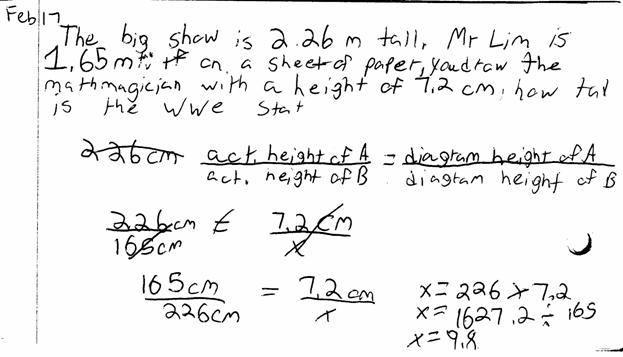

Student #5's first chosen entry lacks detail and clarity. Although the calculations are correct, he does not explain each step in words so that the description is replicable. Computational proficiency is demonstrated, but explanations and mathematical language are non-existent; therefore, the writing sample was scored at a level 1.
Figure 4(b): Student #5's Second Chosen Journal Entry
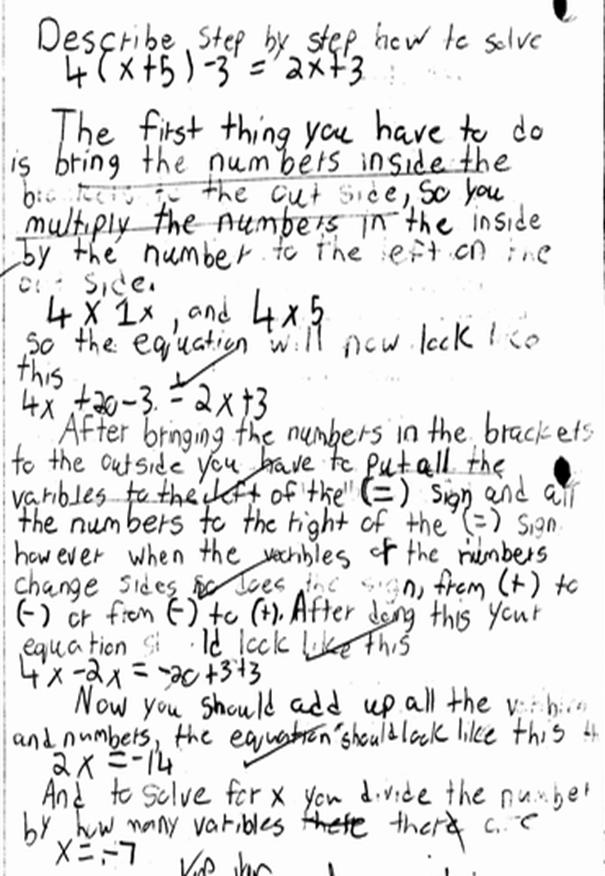
The second entry chosen by student #5 reveals considerable attention to detail and clarity, which was lacking in the first submission. The solution is mathematically correct but the student uses frequent non-mathematical language to describe the actions; for example, "Bring the numbers inside the brackets to the outside, so you multiply the numbers in the inside by the number to the left of the outside." The entry was rated at a level 3, but would have been at a level 4 had the student used mathematical language and vocabulary consistently.
Figure 4(c): Student #5's Third Chosen Journal Entry
Solve ![]() using the method of substitution.
using the method of substitution.
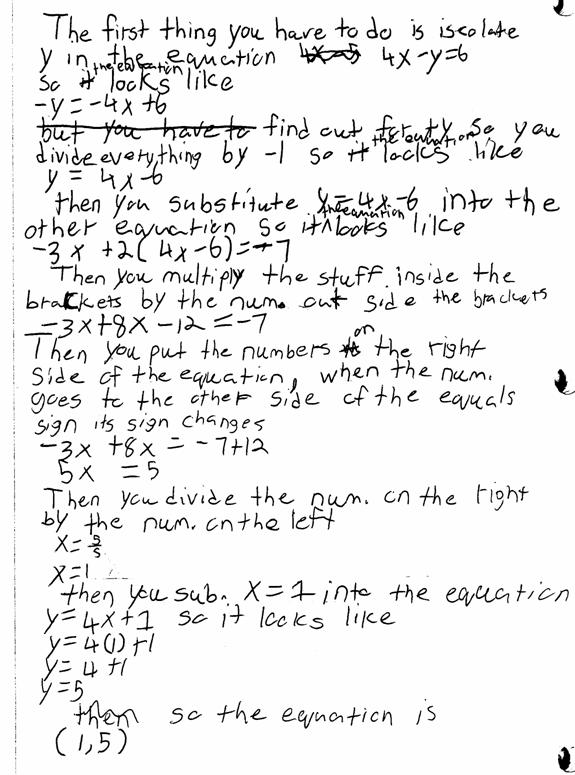
Both entries submitted by student #5 for the second half of the class were scored at a level 4. Phrases such as "so the equation looks like" help the reader replicate the solution using the descriptions provided. The use of mathematical language has increased and used consistently and appropriately; for instance, "Isolate y in the equation 4 x - y = 6" and "then you substitute y = 4 x - 6 into the other equation." Also, there were several instances when the student crossed out the word "it" and replaced that with "the equation". "It" continues to be prevalent by students and they were often reminded to be explicit about the meaning of "it".
Figure 4(d): Student #5's Fourth Chosen Journal Entry
Find tan I and then <I. Describe your steps.
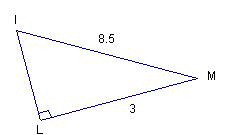
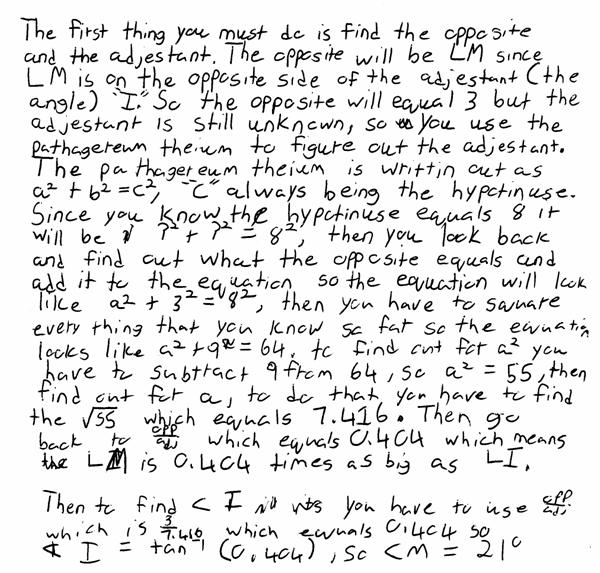
The student's fourth entry also reveals great attention to detail and clarity, allowing the reader to follow the response. Sound mathematical reasoning is evident. The entry would have been rated at a high level 4 had mathematical language been used more consistently. For instance, " ![]() " could be written as "the ratio of
" could be written as "the ratio of ![]() " and "opposite" as "opposite side". Although spelling mistakes are evident (e.g., "pathagereum theium"), the expectation is that mathematical terms are spelled correctly.
" and "opposite" as "opposite side". Although spelling mistakes are evident (e.g., "pathagereum theium"), the expectation is that mathematical terms are spelled correctly.
These examples demonstrate the power of communication in supporting students' capacity to critically think and reason mathematically. Writing helps students focus and extend their thinking by building mathematical understanding. As students write, they reflect and analyze. The connection between writing and understanding mathematics is evident in their work.
Discussion
This study explored the role of journal writing in helping students learn mathematics and in strengthening their communication skills. As seen in figure 3, students' writing improved throughout the study. One factor that positively impacted on student performance was providing them with specific criteria (e.g., through rubrics). That is consistent with Rogers and Graham (2003) who state that rubrics can be used for "guiding/coaching students to desired levels of performance" (p. 197). Of the 10 anonymous questionnaires completed at the end of the course, only 1 student mentioned that journal writing did not help with learning mathematics. The following comments capture some of their perspectives about the role of writing in mathematics:
- "It is good practice and I [sic] shows me whether I can do the question and understand."
- "It has helped me see what I can do and what I need to work on."
- "To help the student to understand the math. Writing journal entries is a good thing I think because it helps me to remember the math."
Not surprisingly, providing detailed, descriptive feedback to students is time-consuming. But, we believe the benefits outweigh that concern. With formative assessment, the emphasis is to help students learn mathematics, rather than use assessment to rank them. Our findings are consistent with Black & Wiliam (1998) who claim that formative assessment can improve student achievement. Students who are test anxious have traditionally been disadvantaged from demonstrating what they know and can do. Journal writing provides these students with an alternative way to demonstrate their learning. This program demonstrates how writing can be used to develop and support mathematical learning - thus helping students attain "mathematical power".
Impact of Action Research
Both authors benefited from this study. The classroom teacher maintained a field journal documenting his thoughts and reflections through regular communication with the university mentor. Such collaboration cannot be over-emphasized since the research literature often cites challenges such as time constraints and working in isolation as factors that impede teacher change.
Journal writing is now an important (and regular) component of the classroom teacher's applied mathematics courses because of the cognitive and affective benefits on students. Also encouraging was students' view of writing as a tool to help them learn mathematics (e.g., through reflection). Although providing descriptive feedback is time-consuming, an unanticipated benefit was having "conversations" with students. The classroom teacher felt empowered through engaging in action research, making professional decisions with the ultimate aim to improve student learning.
This project continues to have a tremendous effect on the university professor's views and ideas relative to writing and assessment, particularly as they connect to work with undergraduate and graduate mathematics education students at the university level. York (2005) argues that collaborative action inquiry is critical in the implementation of emergent forms of knowledge creation and meaning making. The process of sharing and reflecting on the experiences with the applied mathematics course prompted the implementation of a weekly writing activity in the university professor's mathematics methods course. The assessment processes used by the classroom teacher in his work with secondary applied mathematics students provided a sound framework for use in the university level methods course. Though writing had been an important part of the learning and assessment practices in the methods course, the practice was not given the same level of importance given in the applied mathematics course. The use of the iterative action research model of planning, acting, observing, and reflecting (Kemmis & McTaggart, 1988) provided a structure whereby the practices of researchers engaged in the action research study was positively impacted. Though the focus of the action research project was on the applied mathematics classroom in Ontario , the lessons learned and shared through the project had the effect of changing a researcher's practice in North Carolina . This is the power of action research - the power to change the beliefs and practices of multiple researchers.
At the Canadian Mathematics Education Study Group (CMESG) in 2003, a group of educators met for 3 days to debate if all teachers should engage in action research. Although the majority stated "yes", others said "no" since "requiring that all teachers should research implies that teaching alone is not enough and perhaps reflects a lack of understanding of the demands and drain of teaching and researching" (Glanfield, Poirier, & Zack, 2003).
We believe that viewing teachers as inquirers can be empower them since they cannot modify the curriculum, but can make instructional changes. In the near future, we would like to analyze our data looking for gender differences. A potential study is to explore the effects of journal writing (both to learn the mathematics and to strengthen written expression) with English as a Second Language (ESL), who are developing their language skills. With supports (such as resources and release time) and collaboration (with other teachers and with faculty of education professors), we are convinced that action research has the power to effect positive change when teachers critique their own practices.
References
Black, P., & Wiliam, D. (1998). Inside the black box: Raising standards through classroom assessment. Phi Delta Kappan, 80 (2), 139-148.
Boaler, J., & Wiliam, D. (2001). 'We've still got to learn!' Students' perspectives on ability grouping and mathematics achievement. In P. Gates (Ed.), Issues in mathematics teaching (pp. 77-92). London : Routledge Falmer.
Bogdan, R. C., & Biklen, S. K. (2003). Qualitative research for education: An introduction to theory and methods (4th ed.). Needham Heights , MA : Allyn & Bacon.
Boscolo, P. & Mason, L. (2001). Writing to learn, writing to transfer. In P. Tynjala, L. Mason, & K. Lonka (Eds.), Writing as a learning tool. Dordrecht , The Netherlands : Kluwer Academic Publishers.
Davies, A. (2000). Making classroom assessment work . Courtenay , BC : Connections Publishing.
Education Quality and Accountability Office (2003). Retrieved April 30, 2005 from http://www.eqao.com/results
Erdman, W., Fawcett, G., Lim, L., Lo, V., Love, B., Miller, T., & Zolis, P. (2000). Mathematics: Applying the concepts 10 . Whitby , ON : McGraw-Hill Ryerson.
Farrell, T. J. (1978). Differentiating writing from talking. College Composition and Communication, 29, 246-250.
Glanfield, F., Poirier, L., & Zack, V. (2003). Teacher research: An empowering practice? In E. Simmt & B. Davis (Eds.), Proceedings of the Canadian Mathematics Education Study Group (pp. 55-68). Edmonton , AB : CMESG.
Hannay, L. (1998). Action research in everyday practice. Orbit, 29 (3), 40-43.
Kemmis, S., & McTaggart, R. (1988). The action research planner. Victoria : Deakin University .
Lindquist, M. M., & Elliott, P. C. (1996). Communication - an imperative for change: A conversation with Mary Lindquist. In P. C. Elliot & M. J. Kenney (Eds.), Communication in mathematics, K-12 and beyond (pp. 1-10). Reston , VA : NCTM.
McNiff, J., Lomax, P., & Whitehead, J. (1996). You and your action research project. London : Routledge.
Ministry of Education and Training ( Ontario ). (1999). The Ontario curriculum grades 9 and 10: Mathematics. Toronto : Queen's Printer.
National Council of Teachers of Mathematics. (2000). Principles and standards for school mathematics . Reston , VA : NCTM.
Nelson, N. (2001). Writing to learn: One theory, two rationales. In P. Tynjala, L. Mason, & K. Lonka (Eds.), Writing as a learning tool (pp. 23-36) . Dordrecht , The Netherlands : Kluwer Academic Publishers.
Ollerton, M. (2001). Inclusion, learning and teaching mathematics. In P. Gates (Ed.), Issues in mathematics teaching (pp. 261-276). London : Routledge Falmer.
Pugalee, D. K. (2005). Writing for mathematical understanding . Norwood , MA : Christopher Gordon Publishers.
Rogers , S., & Graham, S. (2003). The high performance toolkit: Succeeding with performance tasks, projects, and assessments . Evergreen, CO: PEAK Learning Systems.
Stevens, D. (2005, April). Action research in mathematics, science, and multicultural education. Discussant at the meeting of the American Educational Research Association, Montreal .
Vygotsky, L. S. (1986). Thought and language (translated and edited by Alex Kozulin). Cambridge , MA : MIT Press.
Yorks, L. (2005). Adult learning and the generation of new knowledge and meaning: Creating liberating spaces for fostering adult learning through practitioner-based collaborative action inquiry. Teachers College Record, 107 (6), 1217-1244.
Zevenbergen, R. (2003). Ability grouping in mathematics classrooms: A Bourdieuian analysis. For the Learning of Mathematics , 23 (3), 5-10.
Biographical Note:
 Louis Lim is a Ph.D. student in the faculty of education at York University . He is the recipient of the Ontario Association for Mathematics Education's "Exceptional and Creative Teaching in Secondary Mathematics" and York University Faculty of Education Alumni Association's "Excellence in Teaching Award". His research focuses on classroom-based assessments; in particular, the role of written communication in the teaching and learning of mathematics. Louis can be reached at Louis_Lim@edu.yorku.ca .
Louis Lim is a Ph.D. student in the faculty of education at York University . He is the recipient of the Ontario Association for Mathematics Education's "Exceptional and Creative Teaching in Secondary Mathematics" and York University Faculty of Education Alumni Association's "Excellence in Teaching Award". His research focuses on classroom-based assessments; in particular, the role of written communication in the teaching and learning of mathematics. Louis can be reached at Louis_Lim@edu.yorku.ca .
 Dr. David Pugalee is an Associate Professor of Education at the University of North Carolina Charlotte where he coordinates the Ph.D. program in Curriculum and Instruction. He is interested in mathematics and language, particularly the role of written communication in developing mathematical understanding.
Dr. David Pugalee is an Associate Professor of Education at the University of North Carolina Charlotte where he coordinates the Ph.D. program in Curriculum and Instruction. He is interested in mathematics and language, particularly the role of written communication in developing mathematical understanding.
